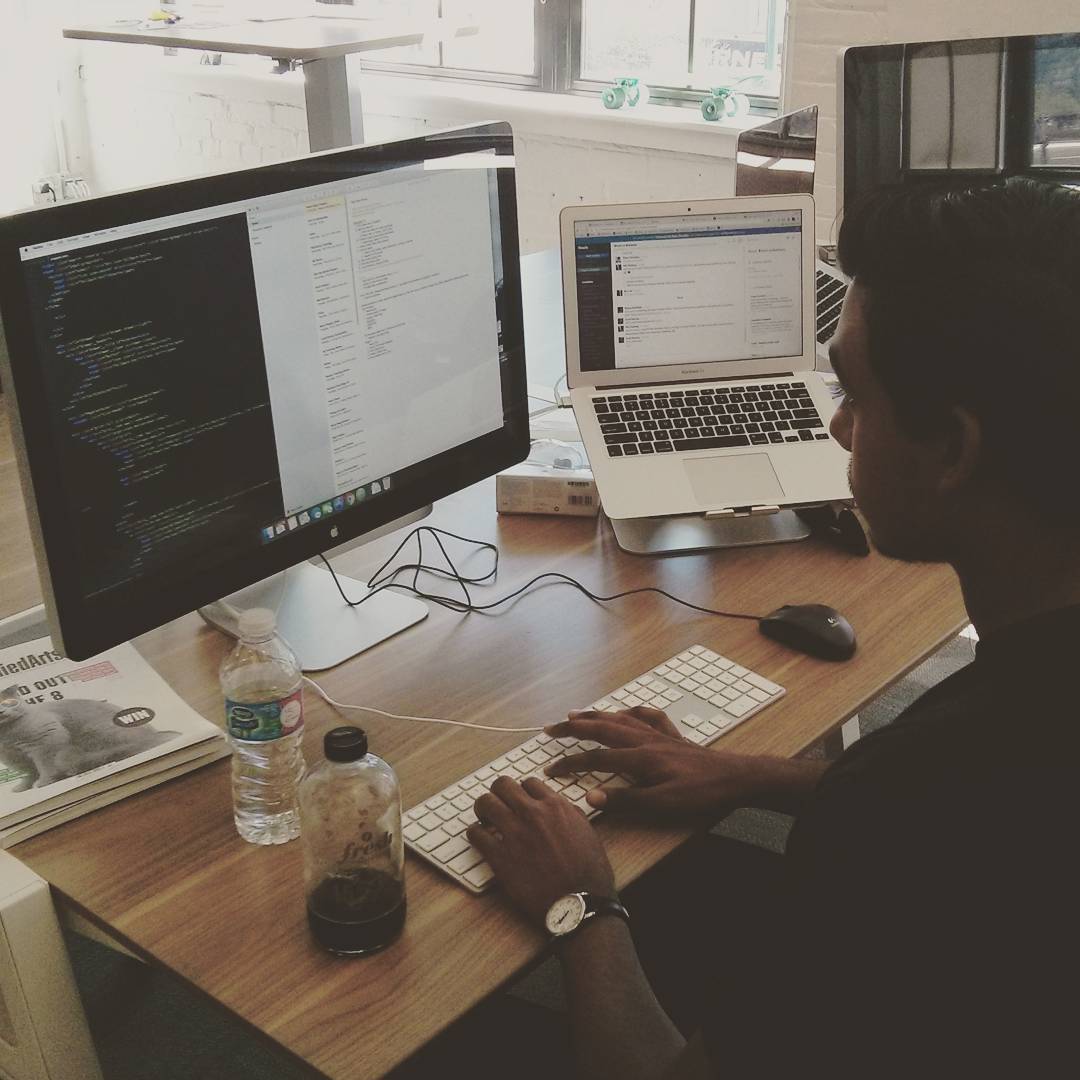From Doctor to Marketer
Finding your path when it isn’t paved
Mom wanted one doctor, but instead she got two arts majors.
In Grade 9, I had the pleasure of accompanying my mom to the hospital for “Take Your Kids to Work Day” where she worked as a nurse in the cardiology department. Being both a South-Asian parent and a medical professional, she was ecstatic to hear about my interest in medicine. My brother was pursuing an arts degree (and presumably law school) so I was destined for med school.
That was, until I started high school math. My dismal mathematics career was countered by my extra-curriculars, where I excelled in DECA, a high school business competition, and student voice activities. My love for public speaking and interpersonal skills made business school a natural choice.
Although I did not know it at the time, this was the first time I made a conscious career choice. I recognized a deficiency in one area, and a skill in another. This has, and continues to be, the driving force behind my professional aspirations.
Just Work at It
I always faced criticism that I wasn’t bad at math or science, I simply didn’t work hard enough at it. While many people (myself included) fail due to mindset, reality also needs to set in. If there’s one thing you can take from this blog post, it’s this:
1. Your academic and professional aspirations should always align with your goals.
Sure I could have continued in math and science, and probably been a solid B student. The challenge there was that I wanted to be a doctor, and med school simply isn’t possible with Bs.
Nassim Nicholas Taleb in his bestseller, Antifragile, notes how those who thrive off disruption are most successful. Pursuing med school with a B average is waiting for disruption (rejection), while building a new skillset in anticipation of a new pathway was thriving off it.
Herd Mentality
Coming to Western, I was dead set on the Ivey HBA program. Their recent employment report sheds some light on the composition of the program, with a whopping 52% of graduates ending up in either finance or consulting. I wasn’t especially interested in finance, so I gravitated towards consulting, which is complemented by the Ivey case-based learning method.
I joined a number of clubs in first year, with Western’s Marketing Association being one of them.
As I progressed through my first year, I gave a lot more thought to my goals. Specifically, I started to question why I wanted to do consulting in the first place. My reasoning boiled down to:
I don’t know what I want to do in business. Consulting gives you exposure to a number of industries and you learn a lot quickly.
This is good reasoning, but it dodges the initial question: what are my goals? Consulting internships don’t start until 3rd year, and simply waiting for that didn’t make sense. The door would always be open — so my resolution became this:
To dive deeper into my interests, and learn more about what interests me.
A New Approach
I began to read a lot more about technology and business; getting daily updates on the tech scene from LAUNCH Ticker and Mattermark, while gaining expert insight from Tomasz Tunguz and Mark Suster. I love learning how B2B companies scaled their sales and marketing, and how B2C companies adapted their features to fit new audiences.
But that wasn’t enough. Even in technology and business, the pool is too vast. After all, which business student would turn down offer to work at Airbnb or Google? This brought me to my second conclusion in my career path:
2. It’s not good enough to be a generalist. You need to do what you love, and be amazing at it.
So naturally, I had to dig even deeper into not just what I was interested in, but what got me excited. If I pursued a career that I truly enjoyed and was not intrinsically disadvantaged in (like my doctor ambitions), then I could more easily learn and grow to become a master of it.
I learned a ton by doing remote/contract marketing for Turnstyle, a tech startup in Toronto.
This was marketing. Everything from content creation to paid advertisements, and email marketing to SEO was fascinating to me. I wasn’t particularly good at all of them, and some I had yet to experience, but the goal alone was enough to drive me.
Like many other career paths, there were resources galore. I started with Neil Patel webinars and the Hubspot blog to better understand the field. I’ve bundled some of the most helpful pieces below.
Eventually, towards the end of second year, I knew my path. I was en route to becoming a true marketer — so what’s next?
The Road Ahead
This past week was my first as a business operations intern with Shopify. I expected to leverage my marketing and sales background to really propel the team, but instead was challenged to tackle a new skill: Data.
Although I am immensely proud of my liberal arts education, my current team is split between engineers with MBAs and math grads with computer science experience. While I could have shied away from the challenge, I instead came to my third conclusion:
3. Even the pros have weak spots. Work on owning yours.
Marketing is data-driven, plain and simple. Your ad spend needs to be tracked, and your content created based on customer data. Even though math was scary, at this point I knew that to be a killer marketer, it was a skill I needed to acquire.
This was HTML source code pasted into Atom.
I don’t need to be the best, but I need to be capable. A killer marketer is that much more powerful when they understand the other components of the business, and how their work fits into that bigger picture.
I never had (and still don’t have) everything figured out, but I realized that I needed to constantly be questioning what I was doing, and why. I think wherever I am in my career, these three take-aways will apply and continue to point me to my true North.























